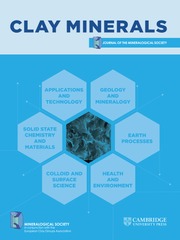No CrossRef data available.
Article contents
Effects of polypropylene glycol-treated montmorillonite/carbon black as a filler with rubber compound properties
Published online by Cambridge University Press: 05 February 2025
Abstract
Carbon black is commonly used as a filler in the rubber industry. However, it can cause serious damage to human health and to ecosystems. Today, reducing the use of this substance via alternative materials is receiving increased attention. Clay minerals such as montmorillonite can be substituted for carbon black as environmentally friendly fillers for rubber compounds. The uniform dispersion of montmorillonite and its compatibility with the rubber matrix are the main principles for using this material in the rubber industry. To this end, montmorillonite was surface treated with various dosages (1.0, 1.5 and 2.0 wt.%) of polypropylene glycol. The surface-treated montmorillonites were investigated using attenuated total reflection Fourier-transform infrared spectroscopy, thermogravimetric analysis, scanning electron microscopy and X-ray diffraction analysis. The results indicated that the treatment expanded the interlayer spaces of the montmorillonite and improved surface hydrophobicity. The untreated and treated montmorillonites were used with carbon black as dual fillers in natural rubber/styrene butadiene-based compounds. The cure characteristics, thermal stability, some mechanical properties and dispersion states were evaluated. The curing study indicated a faster optimum cure time, scorch time and increased torque difference for the rubber compounds filled with surface-treated montmorillonites. Thermal analysis of the rubber compounds illustrated that the interval between the initial and final temperature of decomposition could be increased via the treatment. Surface-treated montmorillonite samples, especially the sample containing 1 wt.% polypropylene glycol, showed improved abrasion resistance, resilience and compression set values.
Keywords
- Type
- Article
- Information
- Copyright
- © The Author(s), 2025. Published by Cambridge University Press on behalf of The Mineralogical Society of the United Kingdom and Ireland.


